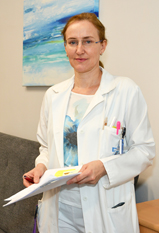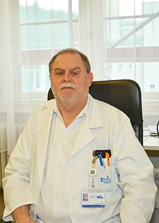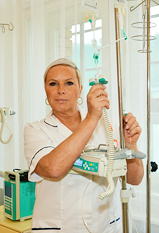- Departments and Clinics
- Clinic of Oncology 1st Faculty of Medicine Charles University and Thomayer University Hospital
Clinic of Oncology 1st Faculty of Medicine Charles University and Thomayer University Hospital
Characteristics
Clinic of Oncology 1st Faculty of Medicine Charles University and Thomayer University Hospital provides for the diagnosis, treatment, and surveillance of patients with solid tumors. Together with the Institute of Radiation Oncology of the Prague-based Bulovka Hospital and the Department of Oncology of Charles University School of Medicine I and the General University Hospital (Všeobecná fakultní nemocnice, or VFN in Czech), it makes up the Comprehensive Oncology Center (Komplexní onkologické centrum, or KOC in Czech).
The clinic is involved in the treatment of all types of solid tumors, particularly breast cancer, colorectal cancer, and urological malignancies using chemotherapy, hormone therapy, biological therapy, and radiation therapy. Besides, we are one of the two Czech centers specializing in the treatment of testicular cancer.
Currently, several clinical trials focused on the treatment of breast cancer and testicular tumors. The department is accredited to perform high-dose chemotherapy supported by autologous stem cells.
The Clinic is based in A3 building, with its radiation units and some departments in X building. Currently, the clinic runs 6 clinical oncology departments, 4 radiation therapy departments, and 1 non-tumor radiation therapy department, plus an 18-chair long-term care facility providing outpatient chemotherapy and biological therapy The clinic´s ward has 27 beds in single- and triple-bed rooms (each rooms has a bathroom). Radiation therapy is performed using 2 linear accelerators and 1 therapeutic x-ray device.
Diagnostic and therapeutic procedures
- Systemic antitumor therapy (chemotherapy, hormone therapy, and biological therapy)
- Radiation therapy
- Supportive therapy
- Pain control
- Surveillance of cancer patients
Premium services
Single-bed room (price list at request) – equipped with bathroom, TV, refrigerator, jug kettle, microwave oven, access to the internet.
Those wishing to get more information about the possibility of and conditions for hospitalization in the premium care room should contact the clinic secretary.
Radiation therapy
Characteristics
Radiation therapy is used mainly to treat malignant radiation-sensitive tumors by destroying them while keeping damage to the surrounding healthy tissue to a minimum. Irradiation is performed either separately or in combination with other therapeutic modalities (surgery, chemotherapy, hormone and biological therapy).
Radiation therapy is employed primarily to treat the following conditions
- prostate cancer
- breast cancer
- lung cancer
- rectal cancer
- esophageal cancer
- gastric cancer
- urinary bladder cancer
- brain tumors
- lymphomas
- testicular cancer
- gynecologic cancer
- tumors in the head and neck reagion
- metastatic involvement of bones or brain
Treatment of most of gynecologic tumors and most tumors involving the neck is not performed in our department.
Radiation therapy is provided both in curative and palliative indications. Currently, the largest groups of patients are males receiving radical radiation therapy for prostate cancer and females receiving radiation therapy after surgery for breast cancer. However, our department is capable of offering treatment to patients with most types of cancer.
Whenever necessary, the department´s employees attend consultation meetings with their colleagues from other departments of Thomayer University Hospital, particularly those from the Clinic of Surgery 1st Faculty of Medicine Charles University and Thomayer University Hospital, Department of Thoracic Surgery, Clinic of Urology 3rd Faculty of Medicine Charles University and Thomayer University Hospital, Clinic of Pneumology 1st Faculty of Medicine Charles University and Thomayer University Hospital, and the Department of Otolaryngology – Head and Neck Surgery.
When scheduling radiation therapy procedures while ensuring high-quality care, it is absolutely critical to cooperate closely with the Division of Medical Physics of Thomayer Hospital.
Treatment of each patient is strictly individualized. While, in most patients, radiation therapy is provided on an outpatient basis, others may require hospitalization in an inpatient ward.
Appointments for radiation therapy sessions can be made on the ground floor of the A3 Building. During entry examinations (taking place in rooms 1-3), the physician will discuss with the patient reasons for therapy, its goals, potential complications and appropriate lifestyle measures, answers any questions the patient may have, and makes a time schedule for therapy.
The patient scheduled to receive radiation therapy for a malignancy will be examined using a planning CT device (also on the ground floor of the A3 Building).
Based on the CT finding, an individualized radiation therapy protocol is developed to best fit the patient´s anatomical characteristics. Whenever necessary, arrangements for additional examinations may be made [mammography, magnetic resonance imaging (MRI), positron emission tomography (PET)] to best identify the area at risk while protecting any uninvolved surrounding organs. Once the therapeutic protocol has been developed, actual therapy can begin.
Actual radiation therapy sessions are performed on the ground floor of the X Building, where both linear accelerators and the therapeutic x-ray device are installed. The X Building undergoing complete reconstruction in 2011, is an extension of the MRI unit. The building, designed for natural daily light to come easily to its interior (wherever possible in terms of radiation safety), creating a pleasant environment for patients receiving demanding therapy.
A large proportion of patients coming to the department also has non-malignant radiatino therapy using a therapeutic x-ray Gulmay system. The conditions treated with this device include some inflammatory or degenerative diseases of the locomotor tract. This therapy is indicated once all other therapeutic modalities have proved to be ineffective (painkiller injections, magnetotherapy, ultrasound therapy to treat, most often, calcar, followed by so-called tennis or golfer´s elbow, knee and hip pain, and so on). The therapeutic x-ray device is also employed to treat some superficial tumors, particularly skin cancer.
Education
Each year, the department´s employees (both physicians and nurses) take part in local and international congresses and are currently involved in grant research projects.
The Clinic of Oncology 1st Faculty of Medicine Charles University and Thomayer University Hospital is the main organizer of the annual symposium on Oncology/Urology and Mammology, and one of the warrantors of an event called Motol Days of Oncology.
The clinic also makes arrangements for fellowships and examinations of undergraduate (BA and ME degrees) medical students of the Charles University School of Medicine (including international students).
The department is accredited to provide postgraduate education/training in clinical oncology and negotiations are currently under way to be granted accreditation for postgraduate in radiation oncology.
The department is accredited for training of radiation therapy technicians/assistants.
Oncology for the 21st Century Foundation
The Clinic of Oncology 1st Faculty of Medicine Charles University and Thomayer University Hospital is the official seat of the Oncology for the 21st Century Foundation providing financial support to the clinic (funding the purchase of a mammograph, sonograph, mobile x-ray device, monitors for the intensive care unit). The Foundation seeks to improve the environment that cancer patients have to temporarily live in (TV sets, furniture, flowers, and various items of art, etc.); its other activities include promotion of health education, particularly by publication of brochures and production of video programs.
The Foundation raises funds through its charity projects and donations for individuals and institutions alike. The Foundation organizes, for its patients, social program featuring fashion shows involving female patients after breast amputation; and makes arrangements – making use of long-standing friendly contacts with many elite performing artists – for concerts and various performances. Neither of the Foundation officers and artists get paid for their involvement, and all of them pursue this activity in their free time.

Head of the Clinic
Radka Lohynská, MD, PhD.,
Associate Professor
radka.lohynska@ftn.cz
+420 261 083 890

Chief of physicians
Eugen Kubala, MD
eugen.kubala@ftn.cz
+420 261 083 733

Head Nurse
Zuzana Vaňková
zuzana.vankova@ftn.cz
+420 261 082 454
Contact for
English-speaking guests
onkolog@ftn.cz
+420 261 083 492
Location
buildings A3 and X
